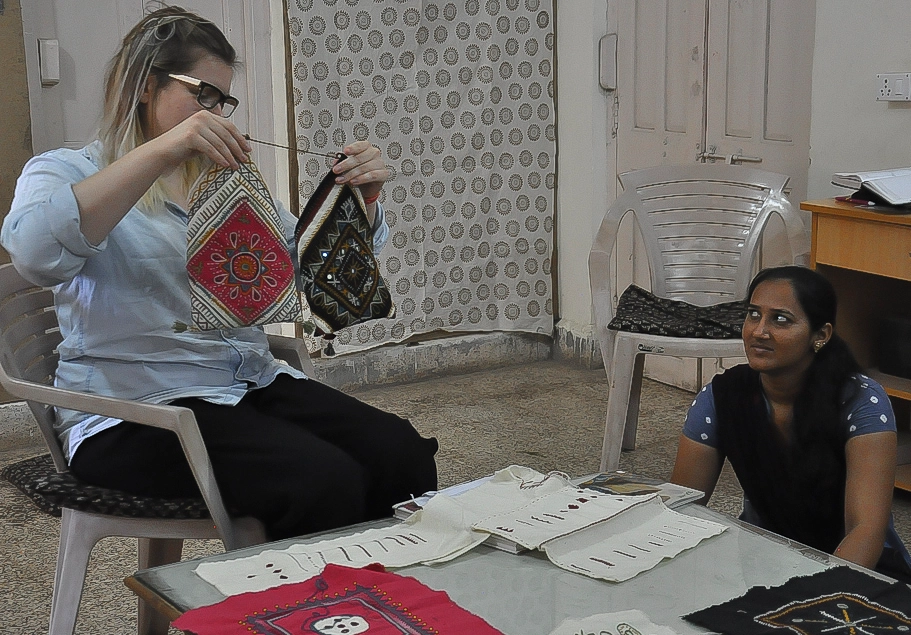Perfection, Excellence, and Connoisseur- ship
 As Emma finished her course in Rabari embroidery, she said she felt free of the bonds of perfectionism. It doesn’t have to be perfect! she discovered. Aakib told his Ajrakh student Claire not to fret over a mistake– it will be lost in the beauty of the piece, he said.
As Emma finished her course in Rabari embroidery, she said she felt free of the bonds of perfectionism. It doesn’t have to be perfect! she discovered. Aakib told his Ajrakh student Claire not to fret over a mistake– it will be lost in the beauty of the piece, he said.
Somaiya Kala Vidya is becoming an art oasis where you can come and appreciate and philosophize.
Alternative to perfection is one thing that drew me to craft so long ago.
Perfection is a mathematical or industrial concept. Ironically, when a block print is copied in screen print, a bandhani copied in mill fabric, or an embroidery stitched on a stenciled pattern, it irons out the beauty that was meant to be preserved. Perfection snuffs out the life of a work of art.
I don’t look for perfection in craft, I recently told a visitor.
Then what do you look for? she asked.
Difficult to define…
The human touch, the person who created the work, humor, play, but above all excellence.
So, where lies excellence? Is it just short of perfection? Or is there something else? And who decides?
A visitor at our Ahmedabad exhibition, a seeker, asked, “How do you know a screen print from a block print?” I called Juned, Mubeen and Mustak- our Ajrakh students. They laughed and said, “You know! You can see it.”
So we examined some block prints. Mubeen gave a hint: somewhere you are going to see a join.
So is hand work bad work?
At a conference on handloom last year, designer Hemang Agrawal asked the audience what is the enemy of hand loom? Most people said power loom. But he said no, the enemy of handloom is bad handloom!
So how do artisans strive for excellence without needing to be perfect?
That is what the traditional artisan knows. They know that excellence isn’t perfect. Perfect is not a goal, just as perfection rarely exists in nature (the ultimate designer.)
Traditional artisans know this in a way that they distinguish from “learning.” When I asked Jivaben how she learned embroidery, she answered, “I didn’t learn it. I knew it.” That is the best definition I have ever found for tradition.
Then how does the consumer discern excellence?Traditionally clients and artisans shared a culture and they knew excellence in the same way.
And there lies connoisseurship.
Perfection is fairly easy to identify. Discerning excellence takes experience.
Arjo Klamer and Priyatej Kotipalli speak of the importance of connoisseurship in creating value, and in building a creative craft culture.
“Creative crafts come about not just because people make creative products, but also because others are able to appreciate those products. That is why we speak of co-creation: the creative crafts are a co-creation of makers, lovers and users.
An artisan’s success is first determined by the people who know, by the experts who can judge the quality, and then by others who pay attention to such judgment and are able and willing to pay the price.”
It takes time and experience to become a connoisseur. It is a journey well worth the time it takes. But connoisseurs are not usually young.
Meanwhile, artisans have some responsibility to teach their clients, in addition to making excellent work. This is part of the journey of connoisseurship, and it is part of the luxury of the human connection. That is exactly how Emma enjoyed her insight.




